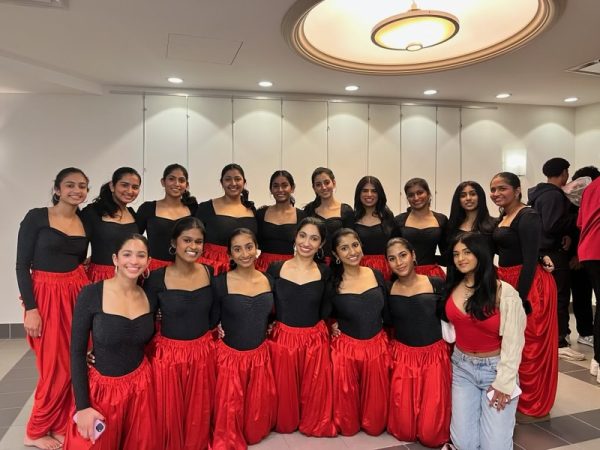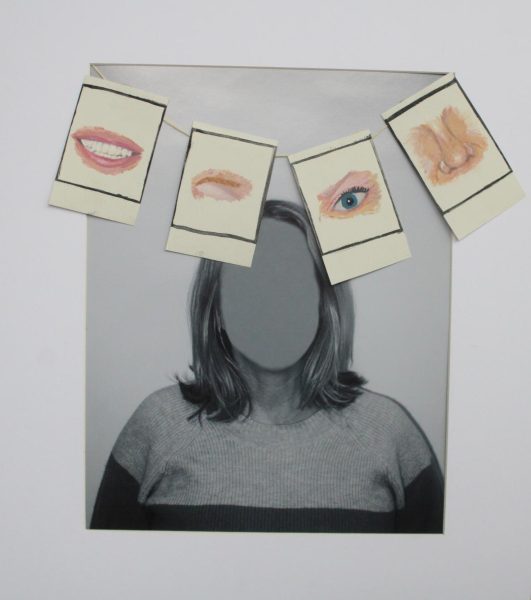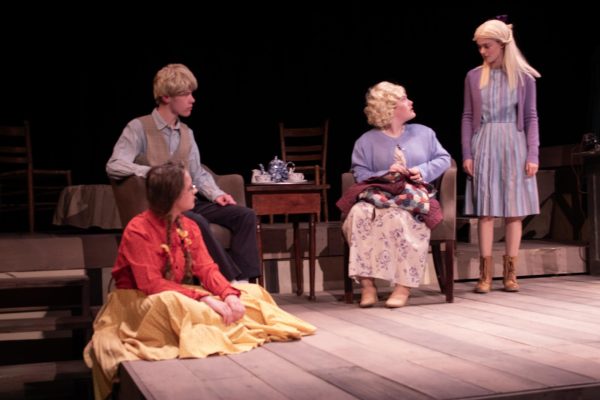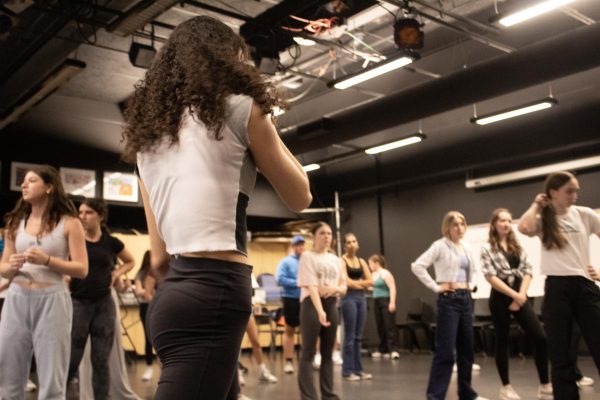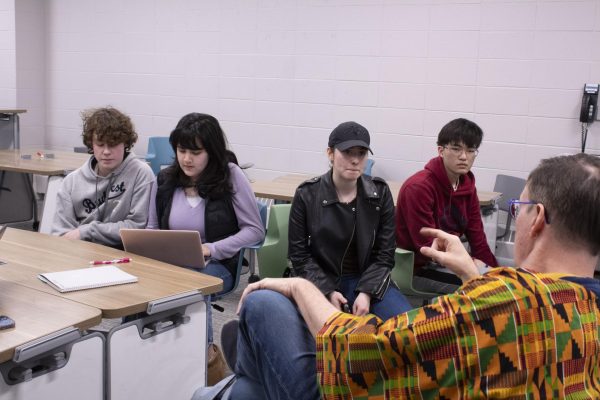Advanced Photography electives provide students with freedom, opportunities for collaboration
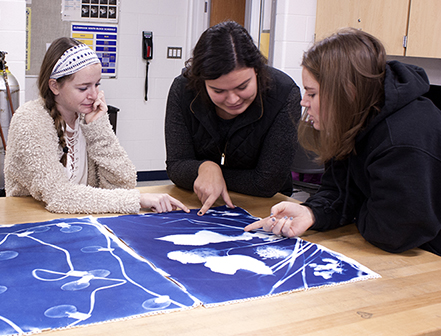
Creatively Collaborating: Critiquing a photo in class, juniors (from left to right) Mara Mazzuccheli, Lauren Zylke and Abby Kwit work together on a piece. Starting with Photography 1 and ending with Photography 8, these classes increase in both difficulty and freedom given to students with each additional level.
January 10, 2018
Lights, Camera, Action!!! Walking down a hallway at South, any of Advanced photography’s 11 members can be seen running around taking pictures for their independent project, which are similar to the portraits that can be found on the walls outside the cafeteria.
Photography Teacher Amie Elliott, who has been teaching for 26 years, provides a class in which students have the opportunity to learn in the same classroom, while working at different levels, ranging from the beginning photography course, Photography 1, all the way to Photography 8. The class size varies, according to Elliot, with the smallest being one student.
“We grow up with phones that take pictures so people think, photography is so easy, so why are we making it so hard?” Elliott said.
According to Elliot, as the difficulty of class increases, as does the level of freedom provided to the students, all the way to Advanced Photography, which is only available for seniors. According to Elliott, in Advanced Photography a student is pushed to make the work based on their personal lives, whether that be issues like depression, moving, or relationships.
“I need students at the upper levels to be more independent, go find places to shoot, try to look at different angles, try it multiple times, think outside the box and bring inspiration,” Elliott said.
According to senior Chloe McKerr, though she takes academic AP classes, she finds Advanced Art to be most challenging because of its intensity and its reliance on meeting deadlines. McKerr explains that taking photography allowed her to gain insight on editing applications like Photoshop, which allowed her to polish up her pieces.
“I would look at really edited photos that make super surrealist photographs and would have no idea how people make that,” McKerr said. “But now I have a sense of how I can do that and how I can imitate some of the techniques they use,” McKerr states.
According to McKerr, a lot of people drop after Photography 1 because it’s focused a lot on film and developing a picture. However, for McKerr, past Photography 1, the class focused even more on taking pictures.
Senior Amanda Sideris, who is currently taking Advanced Art, says photography is a style of art that you can capture one moment in a lifetime. She says she believes the power in photography comes from the ability to capture not only a moment, but the ideas, emotion and significance behind it.
“My sense of wanting to push forward and make something of this was really big, and now my career in the future, I want to do a lot with [photography],” Sideris said.
Sideris says Advanced Photography provides a friendly environment where an artist is faced with collaboration and constructive criticism. Sideris explains that critics that could potentially be interpreted offensively are accepted within the classroom.
“You’re not as good as you think you are, you’ll always get better,” Sideris said, “There’s always a way for you to get better and to learn more things and to learn from other people that know way more than you or know different things than you. You can feed off, of each other and learn more.”






